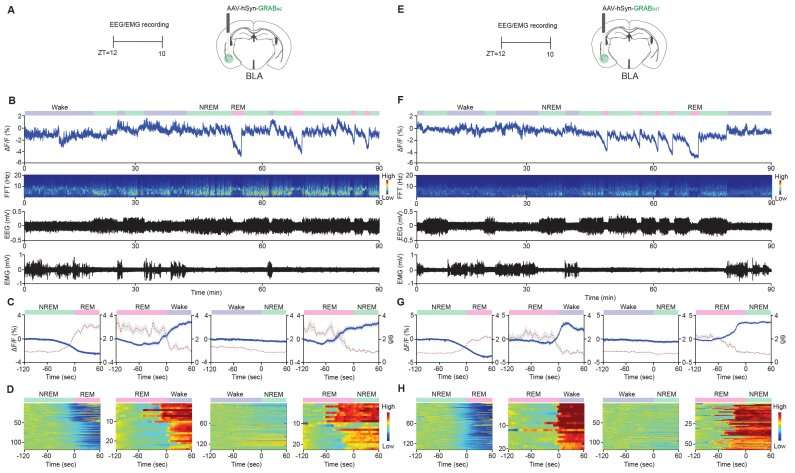Dopamine found to be an initiator of REM sleep


A team of researchers from the University of Tsukuba in Japan and Peking University School of Life Sciences, in China, has found an association between the production of dopamine in the basolateral amygdala and the initiation of REM sleep. In their paper published in the journal Science, the researchers describe their use of optogenetic manipulation in mice to better understand what happens in the brain during sleep cycles. Elda Arrigoni and Patrick Fuller with the Beth Israel Deaconess Medical Center and Harvard Medical School, and the University of California, Davis School of Medicine, Davis, respectively, have published a Perspective piece on the work by the team in the same journal edition.
Prior research has shown that people move between two types of sleep as they doze: non-rapid eye movement and rapid eye movement (REM). What has not been clear is the mechanism involved in switching between the two kinds of sleep. The researchers used optogenetic manipulation in mice to learn more about this process.
Optogenetic manipulation is a technique whereby mice are genetically altered in such a way as to have certain cells respond to the presence of light (using fiber photometry). In this instance, the mice were altered in a way that led to excitement of dopamine fibers in the basolateral amygdala while they were sleeping.
The work by the team involved first watching as cells in the basolateral amygdala were activated during different parts of the sleep cycle. In so doing, they found that production of dopamine in that region of the brain increased just prior to the brain moving into REM sleep. A similar change did not occur during non-REM cycles. This suggested to the researchers that increases in dopamine levels were associated with pushing the brain to move to a REM state. To test this, they artificially stimulated the production of dopamine in the same region while the mice were in a non-REM state and found that doing so pushed the brain to a REM state.
Source: Read Full Article